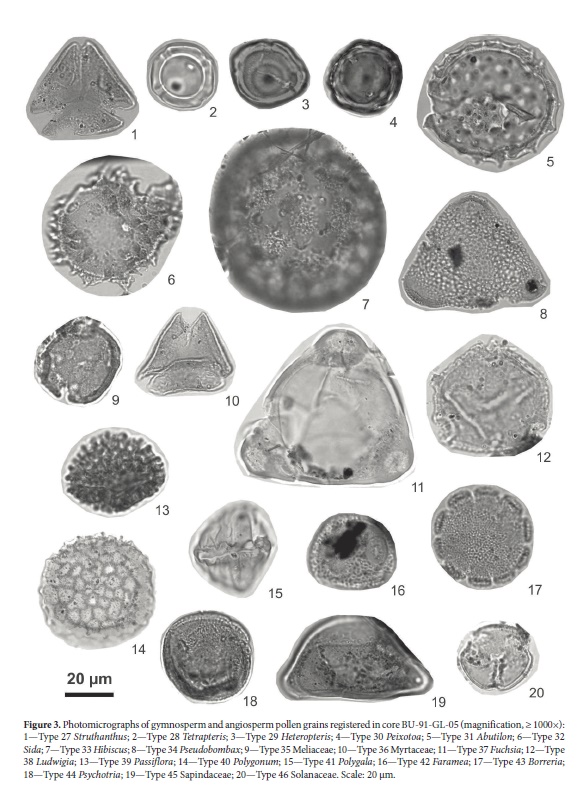Here, we describe pollen grains extracted from a Pleistocene-Holocene sediment core (BU-91-GL-05; 22°48'45"S; 41°54'13"W) taken from the Albacora Slope (22°48'45"S; 41°54'13"W), located in the Campos Basin of the northern region of the state of Rio de Janeiro, Brazil. The analysis resulted in the identification and morphological description of 46 types of pollen: one of a gymnosperm genus (Podocarpus); and 45 of angiosperm taxa across 27 families-one family of monocotyledons (Poaceae) and 26 families (30 types) of dicotyledons. The most common angiosperm families were Amaranthaceae (Chenopodium, Amaranthus and Gomphrena); Fabaceae (Fabaceae type, Bauhinia, Inga and Canavalia); Malpighiaceae (Tetrapteris, Heteropteris and Peixotoa); Malvaceae (Sida, Abutilon, Hibiscus and Pseudobombax); Rubiaceae (Faramea, Borreria and Psychotria); Asteraceae (Eupatorium and tribe Vernonieae); Bignoniaceae (Bignoniaceae type, Adenocalymma and Tabebuia); and Onagraceae (Fuchsia and Ludwigia). The palynoflora in this study are associated with dense montane and submontane Atlantic Forest, semideciduous forest and restinga (coastal woodland), all of which are present in the state of Rio de Janeiro. Palynological analysis can provide important data about paleovegetation and paleoclimatic changes in the studied area during the Quaternary, specifically in the last 145,000 years.
palynology; pollen descriptions; paleovegetation; Quaternary; Campos Basin






